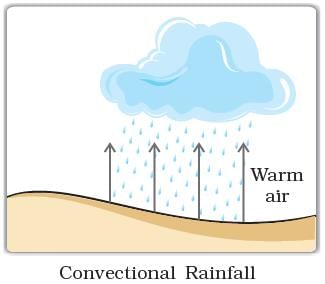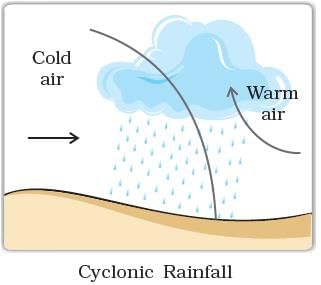UPSC Exam > UPSC Notes > Geography (Prelims) by Valor Academy > NCERT Summary: Air
NCERT Summary: Air | Geography (Prelims) by Valor Academy - UPSC PDF Download
Composition of the Atmosphere
 Composition of Atmosphere
Composition of Atmosphere
- Carbon dioxide released in the atmosphere creates a greenhouse effect by trapping the heat radiated from the earth. It is therefore called a greenhouse gas.
- Nitrogen and oxygen are two gases that make up the bulk of the atmosphere. Carbon dioxide, helium, ozone, argon, and hydrogen are found in lesser quantities.
- Nitrogen is the most plentiful gas in the air. Oxygen is the second most plentiful gas in the air. Green plants produce oxygen during photosynthesis.
- Carbon dioxide is another important gas. Green plants use carbon dioxide to make their food and release oxygen. Humans or animals release carbon dioxide.
Structure of the Atmosphere
- Our atmosphere is divided into five layers starting from the earth’s surface.
- These are Troposphere, Stratosphere, Mesosphere, Thermosphere, and Exosphere.
➢ Troposphere
- This layer is the most important layer of the atmosphere.
- Its average height is 13 km.
- The air we breathe exists here.
- Almost all the weather phenomena like rainfall, fog, and hailstorm occur in this layer.
➢ Stratosphere
- Above the troposphere lies the stratosphere.
- It extends up to a height of 50 km.
- This layer is almost free from clouds and associated weather phenomenon, making conditions most ideal for flying aeroplanes.
- One important feature of the stratosphere is that it contains a layer of ozone gas, which protects us from the harmful effect of the sun's rays.
➢ Mesosphere
- This is the third layer of the atmosphere.
- It lies above the stratosphere.
- It extends up to a height of 80 km.
- Meteorites burn up in this layer on entering from space.
➢ Thermosphere
- In the thermosphere, the temperature rises very rapidly with increasing height.
- The ionosphere is a part of this layer.
- It extends between 80-400 km.
- This layer helps in radio transmission.
- In fact, radio waves transmitted from the earth are reflected back to the earth by this layer.Question for NCERT Summary: AirTry yourself:The layer of the atmosphere which contains dust particles and water vapour is calledView Solution
➢ Exosphere
- The uppermost layer of the atmosphere is known as the exosphere.
- This layer has very thin air.
- Light gases like helium and hydrogen float into space from here.
➢ Weather and Climate
- The average weather condition of a place for a longer period of time represents the climate of a place.
- The degree of hotness and coldness of the air is known as temperature.
- An important factor that influences the distribution of temperature is insolation.
- Insolation is the incoming solar energy intercepted by the earth.
- The amount of insolation decreases from the equator towards the poles.

- Air pressure is defined as the pressure exerted by the weight of air on the earth’s surface.
- The air pressure is highest at sea level and decreases with height.
- Horizontally the distribution of air pressure is influenced by the temperature of the air at a given place. In areas where the temperature is high the air gets heated and rises.
- This creates a low-pressure area. Low pressure is associated with cloudy skies and wet weather.
- High pressure is associated with clear and sunny skies.
- The movement of air from the high-pressure areas to low-pressure areas is called wind. Question for NCERT Summary: AirTry yourself:Which of the following does not affect the distribution of insolation?View Solution
➢ Winds can be broadly divided into three types.
- Permanent winds - The trade winds, westerlies, and easterlies are the permanent winds. These blow constantly throughout the year in a particular direction.
- Seasonal winds - These winds change their direction in different seasons. For example monsoons in India.
- Local winds - These blow only during a particular period of the day or year in a small area. For example, land and sea breeze. Do you recall the hot and dry local wind of northern planes of India? It is called a loo.
- On the basis of mechanism, there are three types of rainfall: convectional rainfall, Orographic rainfall, and the cyclonic rainfall



Mind map

The document NCERT Summary: Air | Geography (Prelims) by Valor Academy - UPSC is a part of the UPSC Course Geography (Prelims) by Valor Academy.
All you need of UPSC at this link: UPSC
|
47 videos|183 docs|155 tests
|
FAQs on NCERT Summary: Air - Geography (Prelims) by Valor Academy - UPSC
| 1. What is the composition of the Earth's atmosphere? |  |
Ans. The Earth's atmosphere is primarily made up of nitrogen (about 78%) and oxygen (about 21%), with small amounts of other gases such as argon, carbon dioxide, and water vapor.
| 2. How is the structure of the atmosphere organized? |  |
Ans. The atmosphere is divided into different layers based on temperature and composition. These layers are the troposphere, stratosphere, mesosphere, thermosphere, and exosphere.
| 3. What role does the atmosphere play in regulating Earth's temperature? |  |
Ans. The atmosphere acts as a protective layer around the Earth, trapping heat from the sun and preventing it from escaping into space. This greenhouse effect helps regulate Earth's temperature and makes the planet habitable.
| 4. How does air pollution affect the Earth's atmosphere? |  |
Ans. Air pollution, caused by human activities such as burning fossil fuels, can lead to the accumulation of harmful chemicals in the atmosphere. This can result in health problems for humans, damage to ecosystems, and contribute to climate change.
| 5. How does the atmosphere protect the Earth from harmful radiation? |  |
Ans. The ozone layer in the stratosphere absorbs and filters out harmful ultraviolet (UV) radiation from the sun, protecting life on Earth from the damaging effects of excessive UV exposure.
|
47 videos|183 docs|155 tests
|
Download as PDF

|
Explore Courses for UPSC exam
|

|
Signup for Free!
Signup to see your scores go up within 7 days! Learn & Practice with 1000+ FREE Notes, Videos & Tests.
Related Searches




















